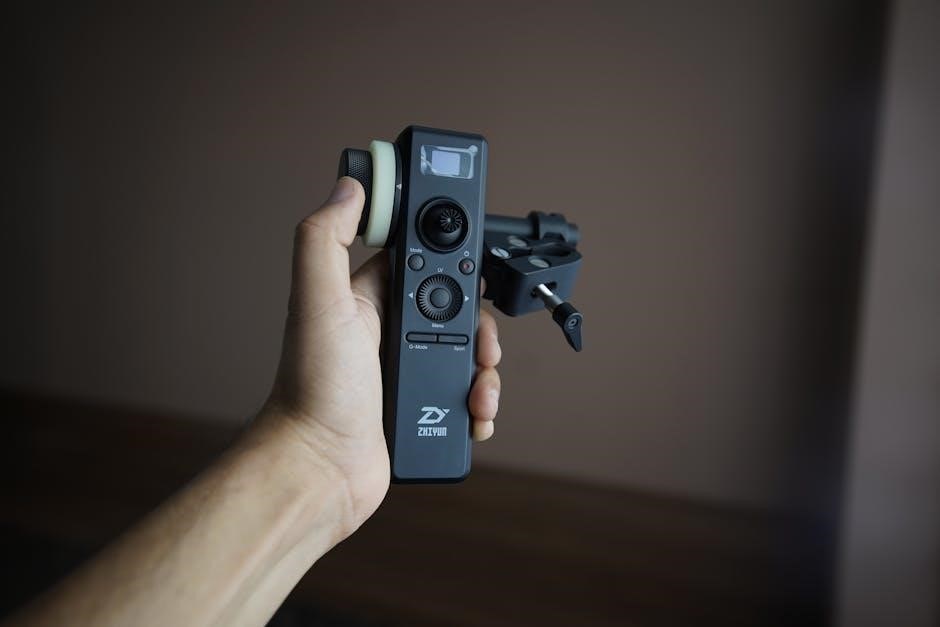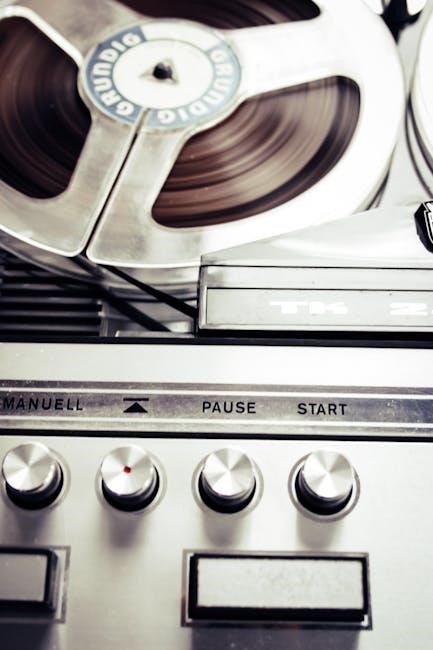airsense 11 manual
Category : Manuals
Welcome to the AirSense 11 Manual. This guide provides essential information for operating ResMed’s premium auto-adjusting pressure device. Understand its features, setup, and maintenance for optimal therapy outcomes with a user-friendly interface.

1.1 Overview of the AirSense 11 Device
The AirSense 11 is ResMed’s premium auto-adjusting pressure device, offering advanced sleep therapy solutions. It includes models like AutoSet, Elite, and CPAP, designed for treating obstructive sleep apnea (OSA). The device features a user-friendly touch screen, heated tubing, and compatibility with various masks. It supports both home and hospital use, ensuring comfort and effectiveness. The AirSense 11 is not suitable for ventilator-dependent patients, emphasizing safe and personalized therapy for those with mild to severe OSA. This device represents a comprehensive solution for sleep therapy needs.
1.2 Importance of Reading the Manual
Reading the AirSense 11 manual is crucial for safe and effective use. It provides detailed instructions, warnings, and precautions to ensure proper operation. The manual highlights contraindications and adverse effects, emphasizing that the device is not suitable for ventilator-dependent patients. Understanding the guide helps users navigate the touch screen, adjust settings, and troubleshoot issues. Failure to follow instructions may lead to reduced treatment effectiveness or device damage. Adhering to the manual ensures optimal therapy outcomes and compliance with safety standards.

Device Setup and Components
This section guides you through unboxing, inventorying parts, and assembling the AirSense 11 device, including connecting the HumidAir 11 tub and ClimateLineAir 11 tubing for optimal therapy.
2.1 Unboxing and Inventory of Parts
Carefully unbox and inventory all components to ensure no parts are missing or damaged. The AirSense 11 package includes the device, HumidAir 11 tub, power supply unit, ClimateLineAir 11 tubing, and mask. Verify each item against the provided list. Check for any visible damage or defects. Familiarize yourself with each part’s purpose before proceeding with assembly. Refer to the user guide for detailed descriptions and compatibility information to ensure proper setup and functionality. This step is crucial for a smooth and safe therapy experience.
2.2 Assembling the AirSense 11
Begin by carefully aligning the HumidAir 11 tub with the device and securing it into place. Gently push until it clicks to ensure proper connection. Next, attach the ClimateLineAir 11 tubing to the device’s air outlet, ensuring a snug fit. Refer to the user guide for detailed instructions and diagrams. Make sure all components are securely connected to avoid leaks or improper function. Proper assembly ensures optimal performance and safety. Always use ResMed-approved parts to maintain therapy effectiveness and device longevity.
2.3 Connecting the HumidAir 11 Tub
To connect the HumidAir 11 tub, align it with the device’s humidifier port. Gently push until it clicks securely into place. Ensure the tub is filled with distilled water as per guidelines. Avoid overfilling to prevent water overflow. The tub is specifically designed for the AirSense 11, ensuring optimal humidity during therapy. Proper connection is crucial for effective humidification and maintaining device performance. Always refer to the user guide for precise instructions to ensure correct setup and functionality.
2.4 Attaching the ClimateLineAir 11 Tubing
Attach the ClimateLineAir 11 tubing by aligning it with the device’s air outlet. Securely connect it to ensure proper airflow. This tubing is designed for heated air delivery and works seamlessly with the HumidAir 11 humidifier. Use only ResMed-approved tubing for optimal performance. The ClimateLineAir 11 tubing is specifically designed for the AirSense 11, enhancing therapy comfort with consistent temperature and humidity. Proper connection ensures effective climate control during sleep therapy, improving overall comfort and adherence to treatment.

Operating the AirSense 11
Navigate the touch screen to access therapy settings, start/stop therapy, and monitor progress. Use swipe and tap actions to adjust parameters and track sleep health effectively;
3.1 Navigating the Touch Screen
The AirSense 11 features an intuitive touch screen interface for easy navigation. Swipe up or down to view menu options and tap to select settings. The status bar displays icons for connectivity, therapy status, and alerts. Use these gestures to access therapy data, adjust settings, and monitor sleep progress. The touch screen allows you to enable features like Pressure Relief or Airplane mode with a single tap, ensuring a seamless user experience. This interface is designed to make therapy management straightforward and efficient.
3.2 Starting and Stopping Therapy
To start therapy, ensure your mask is properly fitted, then press the Start/Stop button. The LED indicator will turn white, signaling therapy has begun. To stop therapy, press the same button; the indicator will revert to green. Always supervise individuals with reduced physical or mental capabilities when operating the device. Therapy should only be paused or stopped when necessary, as consistent use is crucial for effective treatment. Follow these steps to ensure safe and proper operation of the AirSense 11 device.
3.3 Adjusting Settings and Features
Adjust settings and features via the intuitive touchscreen interface; Swipe or tap to navigate through menus and modify therapy parameters like pressure levels and humidity. Use the MY OPTIONS section to customize comfort settings, such as tube temperature and Climate Control. Ensure all changes align with your prescription and consult your healthcare provider before making adjustments. Regularly review and update settings to optimize therapy effectiveness and comfort, ensuring a personalized experience with the AirSense 11 device.

Maintenance and Care
Regular maintenance ensures optimal performance. Clean the device, disassemble for thorough sanitation, and troubleshoot common issues to maintain efficiency and extend the lifespan of your AirSense 11.
4.1 Cleaning the Device
Regular cleaning is essential for maintaining the AirSense 11’s performance and hygiene. Daily, wipe the exterior with a soft cloth and mild detergent. Weekly, disassemble and clean the humidifier tub, air tubing, and mask with warm water and a mild detergent. Ensure all components are dry before reassembling. Avoid harsh chemicals or abrasive materials that may damage the device. Cleaning helps prevent bacterial growth and ensures optimal therapy delivery. Always refer to the manual for detailed cleaning instructions.
4.2 Disassembling for Maintenance
Disassembling the AirSense 11 is crucial for thorough maintenance. Start by unplugging the device and allowing it to cool. Gently remove the humidifier tub by pressing and pulling it away from the device. Detach the ClimateLineAir 11 tubing from the mask and device. For detailed steps, refer to the manual. Always handle components with care to avoid damage. Proper disassembly ensures effective cleaning and prevents potential issues, maintaining the device’s longevity and performance.
4.3 Troubleshooting Common Issues
Common issues with the AirSense 11 may include device shutdowns, weak wireless connections, or improper mask fit. To resolve, ensure stable power, check mask compatibility, and verify tubing connections. For shutdowns, try power cycling the device. If issues persist, refer to the troubleshooting section in the manual or contact ResMed support. Regular maintenance and proper handling of components, like the heated tubing and humidifier, can prevent many problems. Always follow the manual’s guidelines for optimal performance and safety.

Technical Specifications
The AirSense 11 operates within 4-20 cm H2O pressure range, with a maximum single fault pressure of 40 cm H2O. It meets EMC standards and includes a pneumatic flow path with sensors for accurate pressure monitoring.
5.1 Operating Pressure Range
The AirSense 11 operates within a pressure range of 4 to 20 cm H2O (4 to 20 hPa). This range ensures effective therapy for a variety of patients, from mild to severe sleep apnea. The device maintains consistent pressure delivery, crucial for maintaining upper airway patency during sleep. Always ensure settings are prescribed by a healthcare professional to meet individual patient needs. Proper pressure settings help optimize both comfort and therapy efficacy.
5.2 Pneumatic Flow Path
The AirSense 11’s pneumatic flow path includes the inlet filter, blower, pressure sensor, and tubing. This system ensures consistent airflow delivery, maintaining precise pressure levels during therapy. The flow sensor monitors air movement, while the pressure sensor adjusts output for optimal comfort and effectiveness.
Regular maintenance of these components, such as cleaning or replacing the inlet filter, is crucial for uninterrupted therapy. Using non-ResMed parts may compromise performance and safety, so only genuine components should be used. This ensures reliable operation and adherence to safety standards.
5.3 Electromagnetic Compatibility (EMC)
The AirSense 11 is designed to meet international EMC standards, ensuring minimal interference from other electronic devices. If performance is affected, move the device away from potential sources of interference. ResMed complies with regulatory requirements, including FCC rules in the U.S. and RSS-102 in Canada, to ensure safe and reliable operation in various environments.

Advanced Features
The AirSense 11 offers advanced features like heated tubing, Climate Control, and integration with the myAir app for remote monitoring and therapy tracking, enhancing user comfort and therapy effectiveness.
6.1 Heated Tubing and Climate Control
The AirSense 11 incorporates heated tubing and Climate Control for enhanced comfort. The ClimateLineAir 11 tubing delivers warm air, reducing condensation and discomfort. Climate Control maintains optimal temperature and humidity levels throughout therapy, ensuring a comfortable experience. This feature is especially beneficial for users in varying climates or those sensitive to temperature changes during sleep. Proper setup ensures consistent performance, making therapy more tolerable and effective for uninterrupted sleep quality.
6.2 Using the myAir App

The myAir app enhances your therapy experience by guiding setup, offering mask fit videos, and tracking sleep progress. It provides personalized insights and tips to improve comfort. Access device settings, monitor usage, and receive notifications for maintenance. The app is optional but recommended for optimizing therapy outcomes. It supports both iOS and Android, ensuring compatibility for most users. Regular updates ensure the latest features and improvements. Use the app to stay informed and engaged with your therapy journey, making adjustments for better sleep quality and comfort.

Warnings and Precautions
Warnings and precautions are crucial for safe use. The device is not suitable for ventilator-dependent patients. Always read the manual entirely before use to ensure proper operation and avoid risks.
7.1 General Warnings
General warnings ensure safe use of the AirSense 11. Do not immerse the device in water or expose it to extreme temperatures. Keep out of reach of children and unauthorized individuals. Only use ResMed-approved parts and accessories to maintain effectiveness and avoid potential risks, such as carbon dioxide rebreathing. Avoid exposing the device to smoke, ozone, or harmful gases, as this may damage it. Always follow the guidelines provided in the manual to ensure proper operation and safety.
7.2 Contraindications
The AirSense 11 is not suitable for ventilator-dependent patients or those requiring life-support therapy. Additionally, it is contraindicated for individuals with severe respiratory conditions or those who cannot tolerate positive airway pressure. Always consult a healthcare provider before use. The device is intended for patients weighing over 66 lb (30 kg) and is not recommended for children without medical supervision. Ensure compliance with these guidelines to avoid adverse effects and ensure safe therapy outcomes.

Limited Warranty Information
ResMed provides a limited warranty for the AirSense 11 device, covering manufacturing defects for a specified period. The warranty does not cover damage from misuse, non-ResMed parts, or normal wear and tear. Incidental or consequential damages are excluded in some regions. Warranty details vary by region and are outlined in the manual. Contact ResMed or an authorized provider for specific terms and conditions. Ensure compliance with all usage guidelines to maintain warranty validity and enjoy reliable device performance throughout its lifespan.











































































